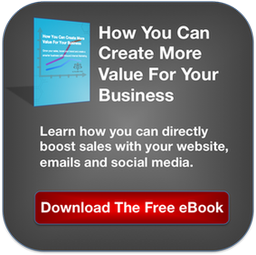What is Inbound Marketing?
Inbound marketing is a relatively new idea. It was essentially created and made popular by an innovative company called Hubspot and is quickly becoming one of the most powerful techniques in marketing and advertising. To answer the question “what is inbound marketing?”, let’s start with what it is not. Get ready for it: outbound marketing. Shocker.
Outbound Marketing
Outbound marketing consists of all the conventional forms of marketing and advertising we see everyday. Commercials, billboards, magazine ads and popups all make up the outbound marketing mix. Outbound marketing is also referred to as interruptive or disruptive marketing (e.g. a commercial interrupts your tv show in attempts to brainwash you into buying something). It is traditionally expensive and generally unsuccessful.
Though outbound marketing has been around since the beginning of commerce, there are some major problems with the approach for modern-day consumers:
To reach enough people to make a difference costs tons of cash.
150 grand is going to get you: • 1 commercial on one network for one week • some radio plugs throughout the year • a couple magazine ads • some annoying online popups people only click on by accident • and a billboard on a back road or local train station if your lucky.
It is extremely difficult (and in many cases impossible) to measure the direct connections between outbound marketing efforts and ROI.
Can you tell how many direct sales a commercial or billboard generates? Umm, no way. There is no direct link (of course unless it is a “call now” infomercial on QVC) between views and sales. All because someone was on that channel or driving down the road does not mean they saw the ad. How many times have you bought something after seeing a billboard?
Everyone hates ads.
Ads are typically very annoying. We accept them as the price we pay for enjoying the creativity of a magazine, website or tv show. Most of us do not treat them seriously or take them into consideration.
your_title
The message of most marketing is completely invisible. At the most, we notice the ad; but the cycle ends there. Most of us do not absorb the brand, the message, and most of the time, the presence of the ad whatsoever.
So in a nutshell, unless you have a multi-million dollar marketing budget, you are going to need a better way to spend your valuable, yet limited, time and resources.
Inbound Marketing
If the last section made you feel discouraged, even taken advantage of by the advertising agencies, do not fret. Some good has come from enduring the years of marketing abuse. That goodness is called inbound marketing and it is here to save modern business… and hopefully some marketing agency souls along the way.
Definition of Inbound Marketing
Inbound marketing is the process of earning your customers’ attention and business online. Wikipedia defines it like this:
“Inbound marketing is based on the concept of earning the attention of prospects, making yourself easy to be found and drawing customers to your website by producing content customers value.”
This is something every business has the potential to do and do well. Of course, it becomes more effective when you work with a team of experts, but basic experimentation can be done with little to no marketing and/or technology background.
Here is how it works:
- Identify your online business goals (increase sales, capture emails, increase web traffic, etc.)
- Identify the types of people who will help realize those goals.
- Create excellent content for them on your website.
- Drive your audience to the content using blogs, SEO, email and social media.
- Use a call-to-action to encourage these visitors to become leads.
- Nurture the leads into customers.
- Measure. Tweak. Repeat.
Inbound Marketing combines tools like: social media, blogging, email marketing, SEO (search engine optimization) and calls-to-action, into one, unified and powerful machine. This allows businesses of any size to maximize the potential of all the free tools available to spread your message to the people who want to hear it!
Inbound marketing uses a variety of the modern tools to:
- Get found by the people you want to connect with.
- Drive them to your website.
- Convert them from visitors to a leads.
- Convert them from leads to customers.
- Measure it all and improve constantly.
Marketing People Want to See
Inbound marketing is also called permission-based marketing. This is because, contrary to outbound marketing, everything is genuinely created for the benefit of the audience, which means they opt-in (or give permission) to see it. All the content and media they see is a direct result of their own decisions. Also, all content and media is completely relevant to their current interests, so they are not only paying attention to you, they are grateful for your information. Imagine that!
Inbound marketing takes an approach that:
- Increases transparency of marketing intentions.
- Allows business with any budget to participate and become successful.
- Uses a permission-based approach rather than a disruptive approach.
- Is completely traceable, so you know how well every penny is spent.
- Can turn on a dime based on real-time events and trends.
What Every Business Owner Needs to Know About Inbound Marketing
In order to create marketing your potential customers not only want to see, but actually love, you need to remember a few things:
- You need to know who they are and what they are looking for.
- Create content for them, about them, not for you, about you.
- Professionally optimize your website – it will make you money.
- Use SEO to publish your content and drive visitors to your site.
- Use analytics to constant adjust and improve your strategy.
Check out this blog for more detailed information about inbound marketing, what it is, and how it can help your business.
Featured Image thanks to voltierdigital.com









